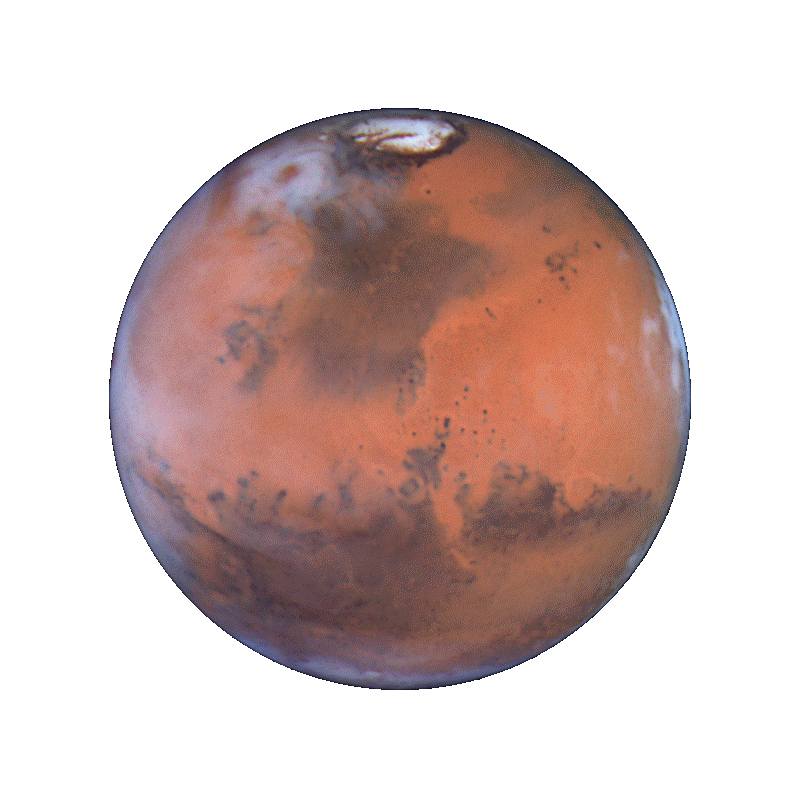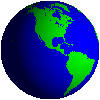The Mysterious Red Planet is actually more butterscotch in color. Mars has the largest canyon in the solar system. It would reach from Los Angeles to Chicago if it were on Earth.
Mars has a very thin atmosphere, mostly carbon dioxide, but dust storms can cover the whole planet for months at a time. About every two years the Earth and Mars come close together. The planet has two moons. Deimos and Phobos. It would take about six months for a spacecraft to get to mars but the crew would have to wait a year and a half before returning. While there are no current plans for a manned mission to Mars you can se some designs at this NASA Mars Mission website.
Olympus Mons, a 550 km wide volcano, is the largest volcano in the solar system and covers an area about the size of Arizona. It is 27 km high in contrast to Mt. Everest on Earth at 8.85 km.
There area a number of volcanoes on Mars but none seem to be geologically active. Mars also has large canyons, dust storms, sand dunes, polar ice caps, and other features similar to those found on Earth.

|
Quick Facts about Mars | |
|
Topic |
Data |
|
Diameter |
6794.4 km |
|
Density |
3.94 g/cm3 |
|
Mass |
6.421 x 1023 kg |
|
Volume |
1.643 x 1011 km3 |
|
Temperature Range |
-140° C to 20° C |
|
Atmosphere |
Mostly Carbon Dioxide |
|
Winds |
Up to 100 km/hr |
|
Moons |
2 |
|
Average Distance from Sun |
227,940,000 km |
|
Orbital Period |
1 Years, 320 Days, 18.2 Hours |
|
Rotation |
1 Days, 0.67 Hours |
|
Tilt |
25.19° |
|
Rings |
No |
|
Composition |
Iron Oxides and Silicates |
|
Magnetic Field |
Slight |









